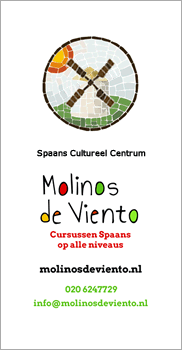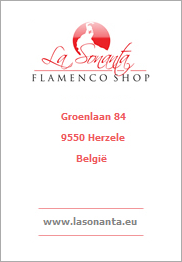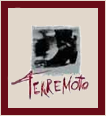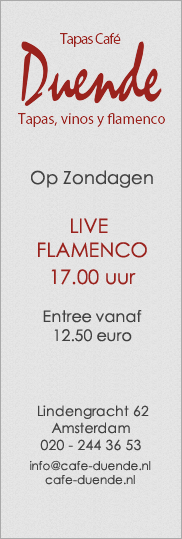INTERVIEW ANTONIO CAMPOS
"Flamenco currently has twenty thousand ribbons tying it to the same point"
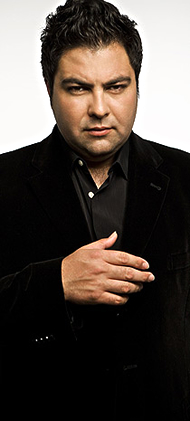 It isn’t very usual, but Antonio Campos decided to make his début with a live album. "Where I could give the most truth", he affirms. The Granada-born cantaor, one of the essential accompanists of baile, performed at the Corral del Carbón in Granada one fine summer day two years ago. His tocaor couldn't come, against the clock he managed to get Daniel Méndez there just in time, and having to improvise the entire repertoire, he offered the recital. Despite the setbacks, he had not only that accompanying guitarist in his favor, but also the warmth of the live show and the magic of a place he considers 'Aladdin’s lamp'. The recording, at first intended as a professional portfolio, was released in the end and is now his letter of introduction. This Granada-born cantaor whose art doesn’t run in the family appears natural for the first time. He was a butcher until the age of twenty-five. And one day his fate changed.
It isn’t very usual, but Antonio Campos decided to make his début with a live album. "Where I could give the most truth", he affirms. The Granada-born cantaor, one of the essential accompanists of baile, performed at the Corral del Carbón in Granada one fine summer day two years ago. His tocaor couldn't come, against the clock he managed to get Daniel Méndez there just in time, and having to improvise the entire repertoire, he offered the recital. Despite the setbacks, he had not only that accompanying guitarist in his favor, but also the warmth of the live show and the magic of a place he considers 'Aladdin’s lamp'. The recording, at first intended as a professional portfolio, was released in the end and is now his letter of introduction. This Granada-born cantaor whose art doesn’t run in the family appears natural for the first time. He was a butcher until the age of twenty-five. And one day his fate changed.
How does the unusual idea of releasing a live recording come about?
Producer Manuel Illán wanted me as an artist. He saw me work in 'Mujeres', where Diana Navarro came in, and he's her manager. In the third gala, he spoke to me and the truth is that I listened to him very respectfully but I didn't pay much attention to him. You never believe that a guy's going to come from the mighty industry and he's going to notice you. And when he was at the London Flamenco Festival, he found out from my colleagues that I had an album recorded. It didn't seem right to me to be going on with someone about "I do", "I have", "I compose"… because they have to be fed up with that. Besides, I didn't think that work was for him. Even so, he wanted to listen to it and he called me up to tell me that he loved it, but it was true that it wasn't within his line as a producer. And as it was already mastered, he told me that what it needed was distribution and in the end he offered to publish it with his own label. He has a really good technician, Boris Alarcón, and he thought he could improve the mixing and the mastering. He did a great job; he improved it… but quite a bit.
How was 'Corral del Carbón' forged?
If we open the session of ProTools, the "click and cut" is in the applauses. What was heard in the recital is what’s there. To give it more weight, I tried to stick in more clapping at the studio and it had just the opposite effect; it lost atmosphere. Moreover, the work by Carlos Grilo and El Lúa is unsurpassable; two claps from them are worth twenty. At first I recorded it with the idea of having something to give to the media and managers and try to take a step forward. And since I was sure that I wanted to record live, when they proposed for me to sing at the Corral del Carbón, I said it had to be there. It's a place I love and it sounds great; it's like Aladdin's lamp. Everything started to fall into place. At first, Dani Méndez wasn’t even going to play, but rather Rafael Rodríguez 'El Cabeza', but he called me up that same day at four in the afternoon telling me he couldn't come and play because he was sick.
INTERVIEW VICENTE AMIGO
"Sometimes I can't stand the pressure I put on myself"
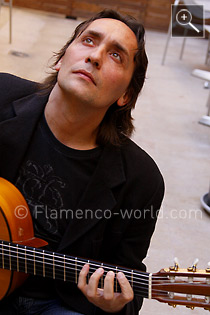 There's more music than words in this interview. Vicente Amigo is in an assembly hall at a hotel in downtown Madrid attending to one journalist after another. Perhaps to make the intense day of promotion more bearable, perhaps to feel accompanied, he has his guitar in his hands the whole time. With two voices, they say that this "Paseo de Gracia" is an album on which he has set himself the challenge of singing with his instrument. The guitar rewards his effort by helping him answer one question after another. And the thing is that these are not easy times for the Córdoba-born musician. The recording has been affected by illness and by the subsequent dejection. But the cure and optimism have come with the album. And he is satisfied with the work and the discoveries, with those "interesting details" cropping up amidst the collaborating voices of Niña Pastori, Enrique Morente, Alejandro Sanz, Estrella Morente… and those of his faithful travel mates. It was thus more bearable to look at himself in the mirror once again and wonder: "What's up, Doc?".
There's more music than words in this interview. Vicente Amigo is in an assembly hall at a hotel in downtown Madrid attending to one journalist after another. Perhaps to make the intense day of promotion more bearable, perhaps to feel accompanied, he has his guitar in his hands the whole time. With two voices, they say that this "Paseo de Gracia" is an album on which he has set himself the challenge of singing with his instrument. The guitar rewards his effort by helping him answer one question after another. And the thing is that these are not easy times for the Córdoba-born musician. The recording has been affected by illness and by the subsequent dejection. But the cure and optimism have come with the album. And he is satisfied with the work and the discoveries, with those "interesting details" cropping up amidst the collaborating voices of Niña Pastori, Enrique Morente, Alejandro Sanz, Estrella Morente… and those of his faithful travel mates. It was thus more bearable to look at himself in the mirror once again and wonder: "What's up, Doc?".
And at that moment, the reflection was fogged up by a health problem. A back injury caused by the self-sacrificing posture which he has embraced the guitar with all his life. And he needed an operation. Vicente Amigo explains it in full detail and with a bit of humor at the start of the conversation: "I had a disc hernia operation a month ago, of the L5… MP3, as I've dubbed it. I'd been dragging it along for five or six years, but it got worse with a fall. I'd been treating myself with ozone, with epidural and in the end I could no longer play, or go out, or straighten up. And I had the operation and the pain went away". He went through fear, he went through pain … and now he's active again: "Following the two week's rest which I carried out to the letter, as soon as I'd recovered a little and was able to pick up the guitar … now I'm in the same dynamics again".
Then, all of that has interfered with the album?
Yes, during the recording I had a terrible time with my back. Besides that, the recording was split in half because I moved to another house. The guitars were already done; thank God. And I had to go to Lauren's (Serrano) studio, my technician… All of this cuts you off. I'd gotten used to recording at my house, in my studio; everything flowed better. Moreover, I was in low spirits for a spell, since everything is heightened. I didn't even feel like playing, but this demand you yourself put in your mind, the matter of having to be better and better… And a time comes when you forget that you're a human being. The hell with it all! We should get that into our heads, because you go crazy. There are times you can't stand that pressure you put on yourself. You become your worst enemy.


